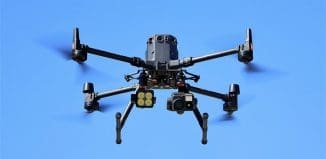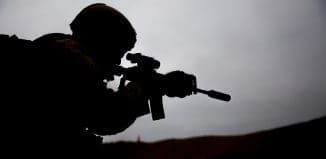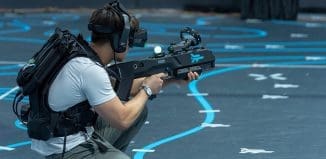Training indoors to control crowds
This post is also available in:  עברית (Hebrew)
עברית (Hebrew)
 Crowd control, a practical skill regularly taught to members of the military and police, is periodically brought to the forefront during clashes such as the Kent State shootings or the recent protests in Turkey’s Taksim Square. Advances in simulation may give them more practice without costly or time-consuming live exercises.
Crowd control, a practical skill regularly taught to members of the military and police, is periodically brought to the forefront during clashes such as the Kent State shootings or the recent protests in Turkey’s Taksim Square. Advances in simulation may give them more practice without costly or time-consuming live exercises.
i-HLS Israel Homeland Security
According to Defense News the Crowd Control Trainer from Netherlands’ VSTEP is scheduled for customer acceptance testing with the Dutch Special Police Forces, Mobile Unit, at the end of this month. The virtual trainer allows users to create different crowd scenarios and practice techniques, such as setting up barricades or using non-lethal force to deal with rowdy individuals.
The simulation was built with police and their special forces in mind. VSTEP’s chief technical officer Pjotr van Schothorst said that it could potentially be customized (with characters and vehicles) for military use in urban scenarios, although the company has not yet shown it off to military customers.

As with most contemporary simulators, the Crowd Control Trainer has customizable geography. The first model created is part of Rotterdam, where the company’s first client is located. But van Schothorst said it could be adapted to model other locations.

“We can model any city, using data like OpenStreetMap, satellite images, photographs and existing 3D building models as a basis,” he said.
[youtube http://www.youtube.com/watch?v=WBVVE5PKP0A?feature=player_embedded&w=640&h=360]
Commanders can manipulate the scenario by introducing vehicles and mounted police or closing off streets. The artificial intelligence driving the demonstrators or protestors provides pathfinding skills and responsiveness to officer input. It can also introduce rowdy citizens causing trouble, such as fighting, throwing rocks or fireworks, or marching with protest boards or flares.
The goal of the training is to allow leaders to immediately see the effects of their decisions. Users can also practice on a variety of crowds, such as single groups or demonstrations, multiple concurrent demonstrations, or rival groups that need to be kept apart.
i-HLS Israel Homeland Security
Currently, the trainer is a stand-alone offering. However, VSTEP plans future changes, including multiplayer functionality and interfacing with other simulators through high-level architecture. It runs from a laptop, where trainees use a gamepad to maneuver the scene and use a low-cost head-mounted display, such as the Oculus Rift, to experience the world in 3D.





























